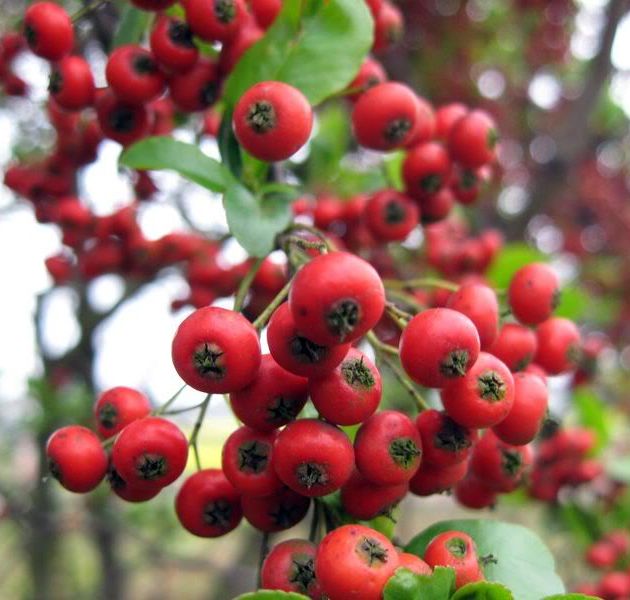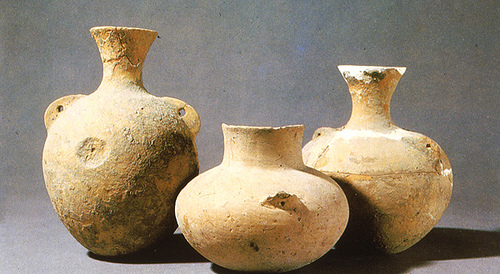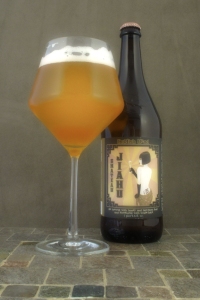There is a fundamental human physiological compulsion to satiate thirst; it is second in our compulsions only to breathing, and followed closely by food and sex – usually in that order. Once our base need for hydration is met, what follows is the desire to explore the possibilities of taste and experience, and this is where alcohol comes in.
It seems we satisfied the daily need for hydration very early in human history and moved on to taste and experience, as the archeological record shows – through analysis of organic residues in pottery – that alcohol fermentation goes back at least 9,000 years to prehistory (for the science nerds among you, analysis is typically done using GC-MS, HPLC-MS, and FT-IR). As alcohol consumption predates writing and regular long-distance trade networks by thousands of years, it is likely that alcohol was discovered independently by many groups around the world through serendipity – possibly through the ingestion of rotting fruit, or leaving a jar of wild honey in a warm place with some moisture. Once discovered though, did it ever become popular – alcohol has played a central role in nearly every single human culture since these neolithic times.
One of the earliest undisputed pieces of evidence that we have for alcohol consumption comes from a neolithic settlement in the central plain of ancient China near the upper Yellow River called Jiahu (賈湖 – Jiǎhú). Pottery analyzed on the site reveals significant details of alcohol fermentation. This site was settled around 7,000BCE with an estimated population of ~200-800 people. Interestingly, in addition to the alcohol, this site also contains one of the earliest examples of writing, one of the first examples of domesticated rice in China, and one of the world’s oldest playable instruments; notably, the villagers also had an average life expectancy of 40 years which is fantastic by neolithic standards. If you wanted somewhere to kick back and relax in 7,000BCE, Jiahu was the place to be. I’m attributing this to the jovial environment created by alcohol consumption. In fact, some of the oldest Chinese pottery discovered is from this site and was used to ferment alcohol from rice, honey, grapes, and hawthorn. In case you don’t know what hawthorn is (I didn’t), it is an evergreen shrub native to southeastern Asia. This is a rather interesting collection of precursor materials as it produces a mixture of wine (grapes), mead (honey) and beer (starches from rice).

During or after the fermentation process, it appears that aromatic herbs and flowers were also added, along with tree resins which would have added additional sugars. All of this indicates that the beverage was very intentionally brewed to be aromatically pleasing and with a sweet taste. Sugar is not very common in nature, but humans have a very strong sweet tooth. We love sugar for evolutionary reasons such as its high energy density and its assistance in helping our bodies store fat. It is no surprise then that most early alcoholic beverages were made very sweet; they were made to be an enjoyable drink and were probably consumed socially. Indeed, the Jiahu society seems to have been egalitarian and organized around the production of this alcoholic beverage with labour specialized into the collection and processing of each of the component ingredients.

The Jiahu drink is a very unique beverage and a modern analogue does not exist; however, a Delaware brewer (Sam Calagione of the Dogfish Head brewery in Rehoboth Beach, Delaware) in 2005 decided to recreate the drink trying to mimic historically accurate techniques. Ancient Chinese alcohol fermentation was of course performed very differently than modern methods. As an example, today we use various yeasts for fermentation, but in 7,000BCE China, several mold species were added to break down the carbohydrates. In modern China, brewing, especially at home, often still uses “starter cakes” (麴餅 – qū bǐng) or Jiuqu (酒曲 – Jiǔ qū) which contain various molds, yeasts, and bacteria, but that is a story for another post. The Delaware brewer used modern Jiuqu from China and tried to mimic the brewing process that would have been possible 9,000 years ago such as brewing at a high temperature (heating would have been done over a roaring fire). The resulting beverage was a beautiful subdued gold colour, with a foamy white head, sweet, and similar in style to a Belgian ale. It sold out almost immediately.

I would highly recommend everyone check out Dr. Patrick McGovern’s article on Jiahu. Dr. McGovern is the Scientific Director of the Biomolecular Archaeology Project for Cuisine, Fermented Beverages, and Health at the University of Pennsylvania Museum in Philadelphia, where he is also an Adjunct Professor of Anthropology.
– D
(Next, check out Origins Part 2)
Sources:
- McGovern, Patrick E. et al.. “Fermented Beverages of Pre- and Proto-historic China”. Proceedings of the National Academy of Sciences of the United States of America 101.51 (2004): 17593–17598.
- GUERRA-DOCE, E. (2006), EXPLORING THE SIGNIFICANCE OF BEAKER POTTERY THROUGH RESIDUE ANALYSES. Oxford Journal of Archaeology, 25: 247–259. doi: 10.1111/j.1468-0092.2006.00260.x
- National Geographic
- No Place Like Homes Blog
Image Sources:
- Hawthorn berries from Daily Nutra
- Featured image of beers from Huffington Post
- Pottery image from Juzhong Zhang and Zhiqing Zhang, Institute of Cultural Relics and Archaeology of Henan Province, Zhengzhou, China
- Jiahu Beer image from Beertography Blog
One Comment Add yours